Intel's Haswell Architecture Analyzed: Building a New PC and a New Intel
by Anand Lal Shimpi on October 5, 2012 2:45 AM ESTPlatform Retargeting
Since the introduction of Conroe/Merom back in 2006 Intel has been prioritizing notebooks for the majority of its processor designs. The TDP target for these architectures was set around 35 - 45W. Higher and lower TDPs were hit by binning and scaling voltage. The rule of thumb is a single architecture can efficiently cover an order of magnitude of TDPs. In the case of these architectures we saw them scale all the way up to 130W and all the way down to 17W.

In the middle of 2011 Intel announced its Ultrabook initiative, and at the same time mentioned that Haswell would shift Intel's notebook design target from 35 - 45W down to 10 - 20W.
At the time I didn't think too much about the new design target, but everything makes a lot more sense now. This isn't a "simple" architectural shift, it's a complete rethinking of how Intel approaches platform design. More importantly than Haswell's 10 - 20W design point, is the new expanded SoC design target. I'll get to the second part shortly.
Platform Power
There will be four client focused categories of Haswell, and I can only talk about three of them now. There are the standard voltage desktop parts, the mobile parts and the ultra-mobile parts: Haswell, Haswell M and Haswell U. There's a fourth category of Haswell that may happen but a lot is still up in the air on that line.
Of the three that Intel is talking about now, the first two (Haswell/Haswell M) don't do anything revolutionary on the platform power side. Intel is promising around a 20% reduction in platform power compared to Sandy Bridge, but not the order of magnitude improvement it promised at IDF. These platforms are still two-chip solutions with the SoC and a secondary IO chip similar to what we have today with Ivy Bridge + PCH.
It's the Haswell U/ULT parts that brings about the dramatic change. These will be a single chip solution, with part of the voltage regulation typically found on motherboards moved onto the chip's package instead. There will still be some VR components on the motherboard as far as I can tell, it's the specifics that are lacking at this point (which seems to be much of the theme of this year's IDF).
Seven years ago Intel first demonstrated working silicon with an on-chip North Bridge (now commonplace) and on-package CMOS voltage regulation:
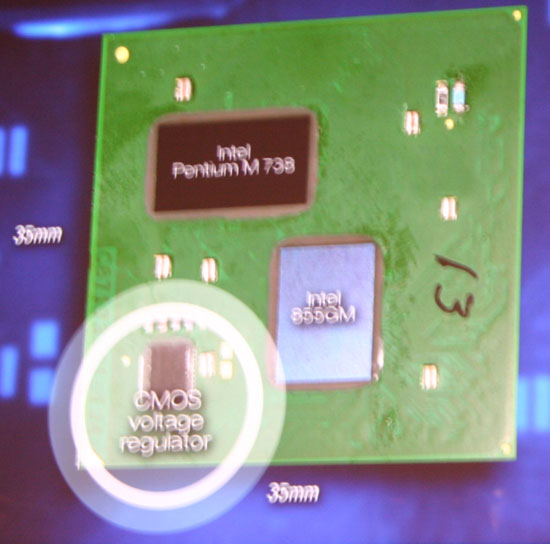
The benefits were two-fold: 1) Intel could manage fine grained voltage regulation with very fast transition times and 2) a tangible reduction in board component count.
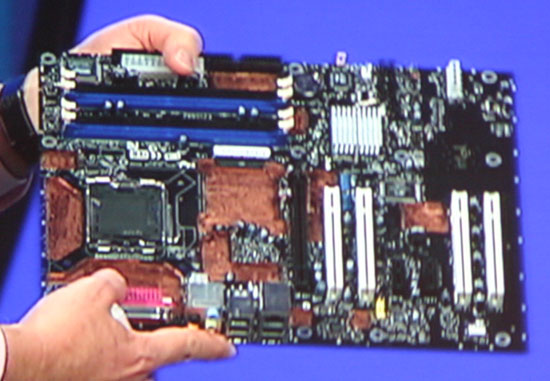
2005 - A prototype motherboard using the technology. Note the lack of voltage regulators on the motherboard and the missing GMCH (North Bridge) chip.
The second benefit is very easy to understand from a mobile perspective. Fewer components on a motherboard means smaller form factors and/or more room for other things (e.g. larger battery volume via a reduction in PCB size).
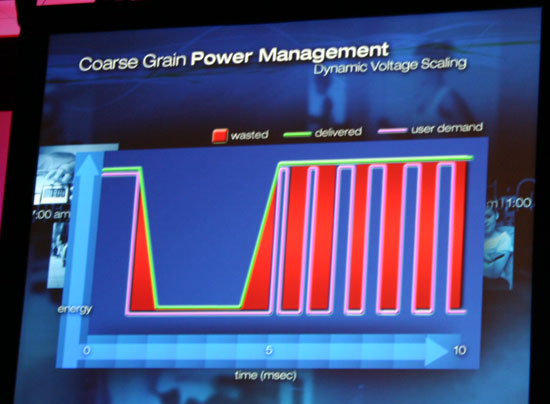

The first benefit made a lot of sense at the time when Intel introduced it, but it makes even more sense when you consider the most dramatic change to Haswell: support for S0ix active idle.


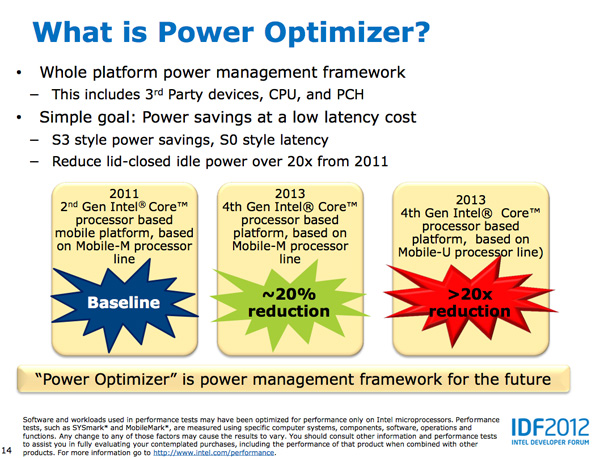
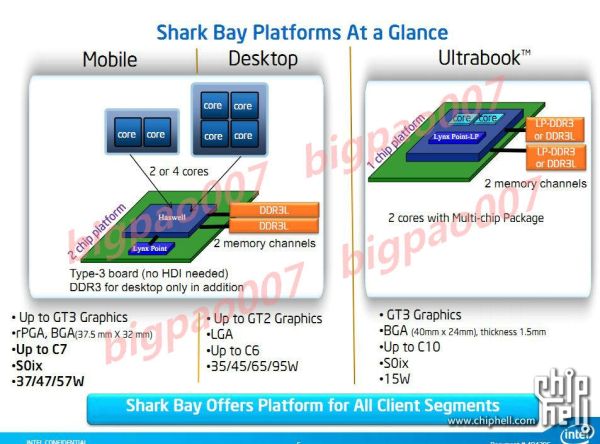








245 Comments
View All Comments
Peanutsrevenge - Friday, October 5, 2012 - link
What the hell are you guys bitching about?Of course the iPhone articles are going to be longer and more numerous than GS3 articles.
iPhone releases come with new iOS releases and have their own eco-system.
Android phone releases use a common OS across them and therefore much of what's in one article doesn't need repeating in another.
Anand liking Apple is not our problem, I can see why people like them (not so much Anand) and that's fine, personally I dislike them (hate was originally typed, but was edited due to being incorrect), but still respect them and respect people who purchase their products (and pay for their litigation).
An entire page of comments talking about how Anand isn't allowed to like or talk about Apple products because you guys don't like is ridiculous, they're a PC company and should exist on a PC website.
Grow up.
Kepe - Friday, October 5, 2012 - link
Sure, but I'm talking about dedicating entire, long articles to such things as the iPhone display or why it doesn't have a certain feature and so on. The SGS III has a very interesting display, too. Still it didn't get nearly as much attention. Of course Anand is allowed to talk about Apple products. What I want, though, is Anand(tech) to be as thorough in reviewing other products, too, or then stop making those huge articles only about Apple products. Because that is biased.In the Macbook Pro Retina article Anand talked about the cooling system and the fan blades for one page. When I read any other laptop review on Anandtech, cooling is briefly described in a sentence or two.
Dedicating so much attention to just one company's products makes it look like Anandtech is biased. And that is not good.
Magik_Breezy - Sunday, October 14, 2012 - link
Hopefully because of these comments they'll finally see what we want, not some Apple crap. Good engineering stupid managementSpunjji - Thursday, October 18, 2012 - link
Nailed it.vFunct - Saturday, October 6, 2012 - link
Android products would get more coverage if they bothered to do any engineering on them. Since they don't push the technology the way Apple does, they don't need a more in-depth review.StevoLincolnite - Saturday, October 6, 2012 - link
You're kidding right? Hardware wise Apple has always been behind the curve compared to the competition in every facet of it's product line-ups or very quickly beaten.lmcd - Saturday, October 6, 2012 - link
Umm, I would disagree there. Apple has always been ahead of the curve in GPUs and this is the FIRST TIME SINCE BEFORE THE A-SERIES that Apple has had a GPU without an overwhelming lead on the competition for more than half a year.*While GPU selection isn't always huge, it's one of the biggest points of differentiation in mobile chips, along with power use.
*excluding the A4 if you count from when it was first in a phone as opposed to in a tablet.
Magik_Breezy - Sunday, October 14, 2012 - link
The last time I played a game on my phone was about 8 months ago and I'm 15! To say that Apple pushes their hardware is naive as it gets.The Galaxy S III was the best purchase Ive made, even my mum doesn't like my iPhone 4.
vFunct - Sunday, October 7, 2012 - link
Yes, Apple products are always ahead of compromised Android products.Android devices are badly engineered, like incorporating LTE when the battery can't handle it, for example. Apple doesn't compromise on their design.
Kepe - Monday, October 8, 2012 - link
How much does Apple pay you for a comment praising them?